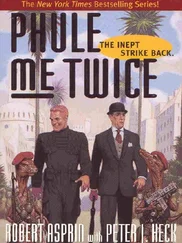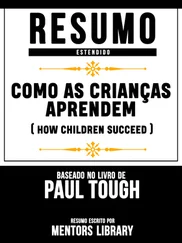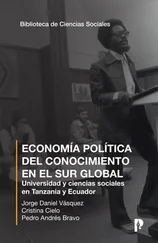Though she was behind on credits at school, Keitha set her mind on graduating with her class in the summer of 2011, and the school system made it possible for her. If you are an underperforming big-city high-school student these days, there are plenty of mechanisms available that let you gather credits quickly: makeup work, night school, online credit-recovery courses like Aventa that let students complete a semester-long course in a month or two. Many education advocates are skeptical about these innovations, which often seem to be nothing more than a new way for school systems to get rid of their most-difficult-to-teach students, sending them out into the world with diplomas but not real educations. But for Keitha, who was more than ready to get away from Fenger, the courses were a godsend, and for the first time in her academic career, she actually worked hard at her classes; she attended night school five days a week and often stayed at Fenger from eight in the morning till seven at night. In June of 2011, Keitha graduated from Fenger and enrolled in Truman College, a community college on the North Side of Chicago, where she began studying for a cosmetology degree.
One day in the spring of 2011, with graduation still a few months away, Keitha and I sat in the Fenger cafeteria and she described her plan for the future. After she graduated from Truman and got licensed, she told me, Lanita Reed had promised her a full-time job in her salon. “Five years from now, I picture myself in my own apartment with my own money,” Keitha said. “And my little sisters, they can come live with me.”
That was what always impressed me the most about Keitha: that her dream was to find a way out not just for herself but for her family too. “I want to show my little sisters that there is a better life than what we see every day,” she told me that day in the cafeteria. “It might look to them like this is all you get, because they don’t know nothing but Parnell and the Hundreds. But there’s more in life than what it is out here, all this fighting and killing and all that. There’s more. There’s way more.”
It is hard to argue with the science behind early intervention. Those first few years matter so much in the healthy development of a child’s brain; they represent a unique opportunity to make a difference in a child’s future. But one of the most promising facts about programs that target emotional and psychological and neurological pathways is that they can be quite effective later on in childhood too—much more so than cognitive interventions. Pure IQ is stubbornly resistant to improvement after about age eight. But executive functions and the ability to handle stress and manage strong emotions can be improved, sometimes dramatically, well into adolescence and even adulthood.
The teenage years are difficult for almost every child, and for children growing up in adversity, adolescence can often mark a terrible turning point, the moment when early wounds produce bad decisions, and bad decisions produce devastating results. But teenagers also have the ability—or at least the potential—to rethink and remake their lives in a way that younger children do not. And as Keitha’s story shows (and as you’ll see again in the chapters ahead), adolescence can be a time for a different kind of turning point, the profoundest sort of transformation: the moment when a young person manages to turn herself away from near-certain failure and begins to steer a course toward success.
2. How to Build Character
The thirty-eight young teenagers who graduated from KIPP Academy middle school in the South Bronx in the spring of 1999 might just be the most famous eighth-grade class in the history of American public education. All black and Hispanic, almost all from low-income families, they had been recruited from their fourth-grade classrooms four years earlier by David Levin, a manic, lanky, twenty-five-year-old white Yale graduate who won them (and their parents) over with the pledge that if they enrolled in his brand-new middle school, he would transform them from typical underperforming Bronx-public-school students into college-bound scholars. In their four years at KIPP (which stands for Knowledge Is Power Program), they had experienced a new, immersive style of schooling, one that Levin often seemed to be inventing on the fly, combining long days of high-energy, high-intensity classroom instruction with an elaborate program of attitude adjustment and behavior modification.
Levin’s formula seemed to have worked, and remarkably quickly: on the eighth-grade citywide achievement test in 1999, the students of KIPP Academy earned the highest scores of any school in the Bronx and the fifth-highest in all of New York City. Those scores—unheard-of at the time for an open-admission school in a poor neighborhood—led to a front-page story on KIPP in the New York Times and a report by Mike Wallace on 60 Minutes, and they helped convince Doris and Donald Fisher, the founders of the Gap, to put millions of philanthropic dollars behind an effort to turn KIPP into a national network. That project has led to the creation of more than a hundred new KIPP charter schools around the country over the past decade, and it has kept KIPP, for better or worse, at the center of the national debates over charter schools, unionized teachers, standardized tests, and the effect of poverty on learning.
From their very first day of school, back in 1995, the students in that initial cohort at KIPP Academy were reminded—some might say browbeaten—about the importance of higher education. They were labeled the Class of 2003, for the year they would enter college. The school’s hallways were lined with college pennants, and each teacher decorated her classroom with paraphernalia from her own alma mater. A giant sign in the stairwell reminded the students of their mission: climb the mountain to college. And when they graduated from KIPP, they seemed poised to do just that: Not only did they leave middle school with outstanding academic results, but most of them had won admission to highly selective private or Catholic high schools, often with full scholarships.
But for many students in that first cohort, things didn’t go as planned. “We thought, ‘Okay, our first class was the fifth-highest performing class in all of New York City,’” Levin told me. “‘We got ninety percent into private and parochial schools. It’s all going to be solved.’ But it wasn’t.” Almost every member of the Class of 2003 did make it through high school, and most of them enrolled in college. But then the mountain grew steeper: Six years after their high-school graduation, just 21 percent of the cohort—eight students—had completed a four-year college degree.
Tyrell Vance was part of that original KIPP class, and in many ways his experience was typical. When he first arrived at KIPP, he felt overwhelmed, bewildered by the rituals and rules and energy. “It was like a culture shock,” he told me. “I had never seen anything like it.” Vance considered homework to be optional, but at KIPP, it was mandatory, and that difference of opinion led to a long series of battles between Vance and the KIPP staff. When the class took off on a trip to Vermont in seventh grade, Vance was left behind to catch up on his homework. Still, it was clear that KIPP’s teachers were devoted to him and his fellow students, and he became devoted to them as well. “They were my second family, in essence,” he told me. “That’s the vibe we all ended up getting, that we were like a family.”
Like so many students in that class, Vance was a math star in middle school, acing the citywide test, passing the ninth-grade state math course when he was still in eighth grade. But when he got to high school, he told me, away from KIPP’s blast furnace of ambition, he lost his intensity. “I didn’t have the drive that I had when I was at KIPP,” he explained. He started coasting, and his report cards were soon filled with Cs instead of the As and Bs he’d been getting in middle school. The way Vance sees it today, KIPP set him up for high school very well academically, but it didn’t prepare him emotionally or psychologically. “We went from having that close-knit family, where everyone knew what you were doing, to high school, where there’s no one on you,” he said. “There’s no one checking if you did your homework. Then we had to deal with all the stuff that everybody goes through in high school, just growing up. And none of us were really prepared for that.”
Читать дальше



![Коринн МакКей - How to Succeed as a Freelance Translator [calibre 3.46.0]](/books/402693/korinn-makkej-how-to-succeed-as-a-freelance-transl-thumb.webp)








